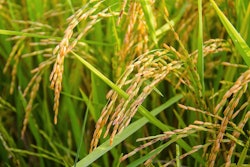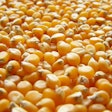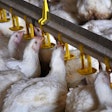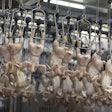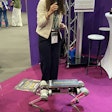
A tsunami of digital technologies have changed the way poultry are fed, raised and processed. What’s the next innovation that will transform the industry from farm to fork?
“Today, we’re looking at the feed efficiency of a chicken and we’re imagining that we’re highly efficient because the feed efficiency is approaching one to one,” Aidan Connolly, president, AgriTech Capital, said.
“But, from my perspective, there’s still a long way for us to go.”
The future of new technologies will need to address water utilization, the gap between research and field conditions, the microbiome and more, he added.
At the International Poultry Council Annual Meeting 2024, Connolly will discuss what’s next when it comes to innovation in food and farming.
Robotics and automation
Robotics and automation could be major disruptors of the poultry industry, particularly when it comes to the labor shortages and challenges in processing.
“It’s just hard to get people to work in processing plants,” Connolly explained, adding that “I think that robotics is fundamental here.”
There also great potential for robotics to monitor and perform tasks in poultry houses, but the high cost of these is still a limiting factor.
Sensors, cameras and audio monitoring
Sensors, cameras and microphones are automating monitoring in the poultry house. These systems are capable of measuring behavior and environmental factor such as humidity and ammonia. Some can even predict a poultry disease outbreak before it occurs.
“I’m very excited by the idea of being able to detect disease in real time by sampling the air, rather than look for some indirect measurements, such as mortality, which is usually too little, too late,” Connolly said.
Future transformation
While the digital disruptions of the last ten years have led to significant changes and improvements in the poultry industry, the next decade will be even more transformative, Connolly predicts.
“We need to be thinking much more disruptively, much more transformatively and really a different model. That could be smaller, it could be close to the consumer, it could be larger, but continuing to improve on some of the parameters we’re looking for,” he added/
Attend the International Poultry Council Annual Meeting 2024
The International Poultry Council Annual Meeting 2024, scheduled for May 6-8 in Buenos Aires, Argentina, is three days of insights and discussions on how the global poultry sector can take the lead.



